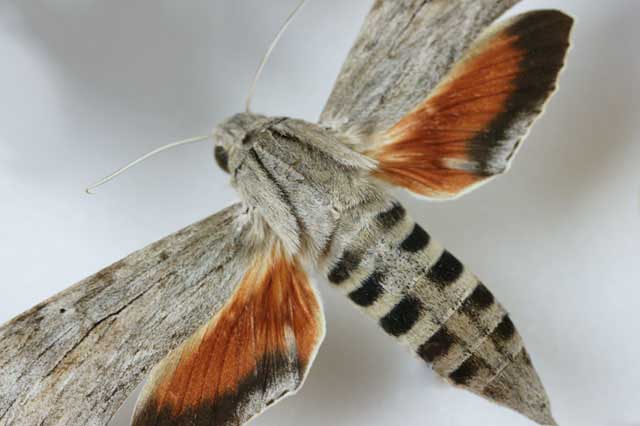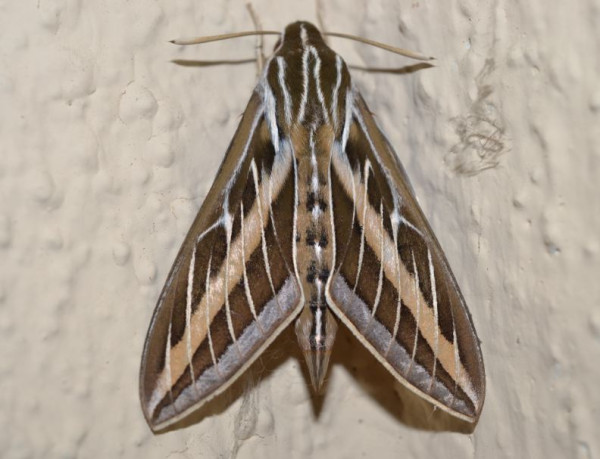Los Angeles County, California
Sphingidae
Erinnyis ello female, Los Angeles County, California, courtesy of Clark Thompson.
|
|
Updated as per James P. Tuttle's The Hawk Moths of North America, March 26, 2010 Updated as per personal communication with Dan Yokich; Smerinthus cerisyi, Los Angeles, April 14, 27, 2011 Updated as per personal communication with Tim Bonebrake (Hyles lineata, Hollywood, March 16, 2012); August 19, 2012 |

Erinnyis ello female, Los Angeles County, California, courtesy of Clark Thompson.
This page is dedicated to Clark Thompson who has provided me with images and data for Catocala and Sphingidae species from California. Clark is also the moderator of Insectnet.com. Many thanks to Dan Yokich who has sent me images of Smerinthus cerisyi from Los Angeles on April 14 and April 27.
It is hoped that this checklist, with the thumbnails and notes, will help you quickly identify the moths you have encountered.
A WO" after the species name indicates that I have no confirmed reports of this species in Los Angeles County, but I (William Oehlke) expect that this moth is present.
A USGS (nmow BAMONA) indicates the moth is reported on the USGS website and/or in Moths of Western North America, #2. Distribution of Sphingidae of Western North America, revised, an excellent little booklet available through Paul Opler.
Please help me develop this list with improved, documented accuracy by sending sightings (species, date, location), preferably with an image, via email to Bill Oehlke.
Please also send your sightings to BAMONA, an excellent on-line resource.
Many thanks also to Tim Bonebrake who sends the following image from Hollywood:

Hyles lineata, Hollywood, Los Angeles County, California,
March 16, 2012, courtesy of Tim Bonebrake.
Sphinginae subfamily
Smerinthini Tribe:
Macroglossinae subfamilyDilophonotini Tribe:
Philampelini Tribe:
Macroglossini Tribe:
|
Enjoy some of nature's wonderments, giant silk moth cocoons. These cocoons are for sale winter and fall. Beautiful Saturniidae moths will emerge the following spring and summer. Read Actias luna rearing article. Additional online help available.
Use your browser "Back" button to return to the previous page.
This page is brought to you by Bill Oehlke and the WLSS. Pages are on space rented from Bizland. If you would like to become a "Patron of the Sphingidae Site", contact Bill.
Please send sightings/images to Bill. I will do my best to respond to requests for identification help.
 Show appreciation for this site by clicking on flashing butterfly to the left. The link will take you to a page with links to many insect sites. |